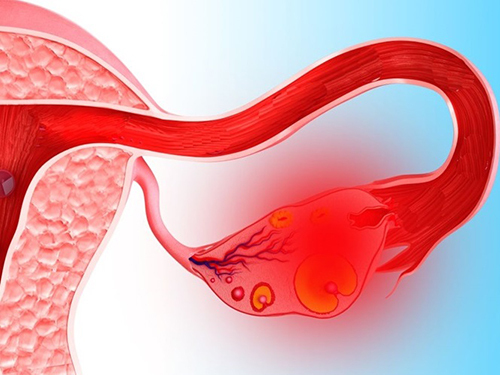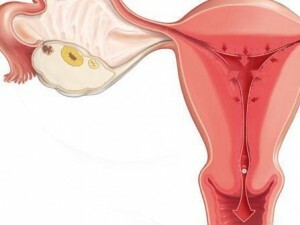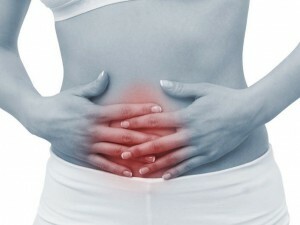Vascular rupture of the ovary is more often diagnosed in women aged 18 to 45 years. This time is more fertile activity. It's no wonder that many people want to know how the monthly will go after apoplexy of the ovary. The women who have suffered a malaise notice the different course of the critical days. But what of it to consider as norm?
Why menstruation can be disturbed? Ovaries are important for menstrual function. These organs alternately produce sex cells, the degradation of which outside conception leads to the replacement of the upper endometrium. They also produce hormones that are essential for its growth. When a vessel ruptures one of the organs, blood seeps into its tissue or abdominal cavity. This provokes a violation of the ovary, pain, requires medication, and in some cases, surgery.
Often, vascular damage is provoked by other gynecological ailments. In general, in order that the men who have come after apoplexy of the ovary take a different view, there are several grounds:
- Hormonal and functional disorder caused by both an obvious cause and accompanying ailments;
- Stress;
- Pain;
- Use of medicines.
All circumstances interfere with the proper formation of the endometrium, therefore the volume of menstrual flow can change in any direction.

Vascular rupture of the ovary or apoplexy as a result of a cyst provokes a disruption of the normal functioning of the body
Cycle failure
Often after diagnosis in the course of therapy, critical days come on time. Vascular rupture of the ovary often manifests itself against the background of ovulation, and when the menstrual period is not late, this means a rapid restoration of the organ's functions and the absence of other gynecological problems.
 Monthly can come and a little earlier, which causes the hormonal impairment with a sharp rise and a rapid drop in substances that ensure the work of the childbearing system.
Monthly can come and a little earlier, which causes the hormonal impairment with a sharp rise and a rapid drop in substances that ensure the work of the childbearing system. The reasons mentioned above, accompanying the diagnosis, are also able to delay critical days. Pain, medication, stress inhibit the cyclical development of not only the reproductive system, but also the processes occurring in the pituitary gland. But this is he who organizes the problem-free functioning of the ovaries. To support their work, minimize cycle disturbances, after providing emergency care appoint a course of hormonal drugs.
Menstruation in patients with ovarian apoplexy

Lean monthly after apoplexy of the ovary
How the first months after apoplexy occur depends on the degree of organ damage, the chosen method of treatment and the number of concomitant factors. Allocations at this time may be more scarce because of insufficient development of the endometrium, interrupted by a sudden onset of malaise.
If its causes are inflammatory ailments, polycystosis, cysts, such menstruation may remain in the future until they are eliminated. But in the absence of such ailments, the monthly after apoplexy return to the usual parameters typical for the organism.
Fluid entering the abdominal cavity causes the operation, during which the ovary is sutured, the blood is removed. This is a more difficult test for the body as a whole, especially for the reproductive organs. Accordingly, and the monthly after the lumbar apoplexy may be delayed for a longer period, up to 1.5-2 months.
This is caused by the more serious condition of a woman during an illness, possibly by a loss of blood. When the critical days come, the allocation is more meager than usual.
In severe injury to the ovary, it is removed partially or completely. In the first case, the organ remains a worker, follicles continue to form in it and the eggs mature, that is, menstruation has the same form. Removal of one of the ovaries will prolong the cycle, but will retain the monthly and fertility ability. Allocations can decrease quantitatively.
 We recommend that you read an article on the monthly for an ovarian cyst. You will learn about follicular and endometrioid cysts, the causes of their appearance, the consequences after the rupture of the cyst, as well as the change in the menstrual cycle after the operation.
We recommend that you read an article on the monthly for an ovarian cyst. You will learn about follicular and endometrioid cysts, the causes of their appearance, the consequences after the rupture of the cyst, as well as the change in the menstrual cycle after the operation.
Pain in menstruation after apoplexy of the ovary
Pain after apoplexy of the ovary with monthly and with successful treatment of 1-2 cycles can be palpable than before. This is caused by the movements of the smooth muscles of the uterus in the process of getting rid of the obsolete endometrial tissues. They can create oscillations that will respond in a damaged, healing organ.
But if the sensations are very strong, and the discharge is intense, it is likely that there are other gynecological problems that triggered apoplexy:
- Adenomyosis
 ;
; - Endometrial hyperplasia;
- Endometrial polyps;
- Ovarian cyst.
Pain in critical days after vascular rupture can be one of the consequences of the formation of adhesions in the affected organ, the fallopian tube. They are formed because of the splashing of blood and the disruption due to this tissue regeneration.
In order not to force a woman to suffer pain and to guess about its origin, after some time after treatment, ultrasound is prescribed.
Tracking the monthly, following ovarian apoplexy, is necessary not only because they will let you know the level of recovery of the reproductive system.
Menstruation features may indicate other available, but not yet detected, ailments. They are the catalyst for vascular rupture in the ovary, which can be repeated in the same or another paired organ. And this is already a reduction in the chances of a successful pregnancy and conception itself.

Vascular rupture of the ovary or apoplexy as a result of a cyst provokes a disruption of the normal functioning of the body


Lean monthly after apoplexy of the ovary
 We recommend that you read an article on the monthly for an ovarian cyst. You will learn about follicular and endometrioid cysts, the causes of their appearance, the consequences after the rupture of the cyst, as well as the change in the menstrual cycle after the operation.
We recommend that you read an article on the monthly for an ovarian cyst. You will learn about follicular and endometrioid cysts, the causes of their appearance, the consequences after the rupture of the cyst, as well as the change in the menstrual cycle after the operation.  ;
;